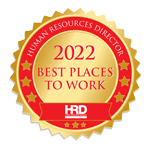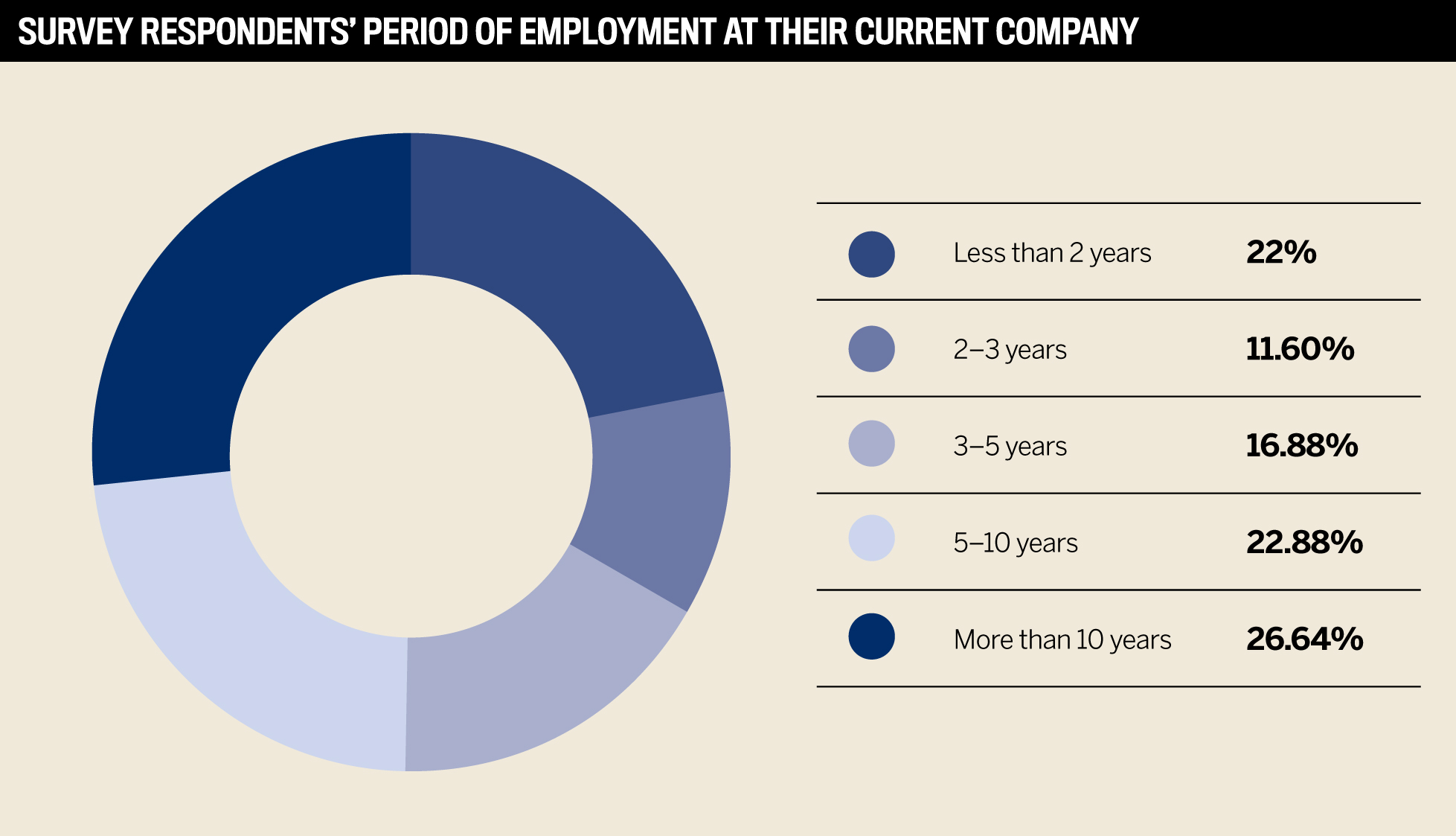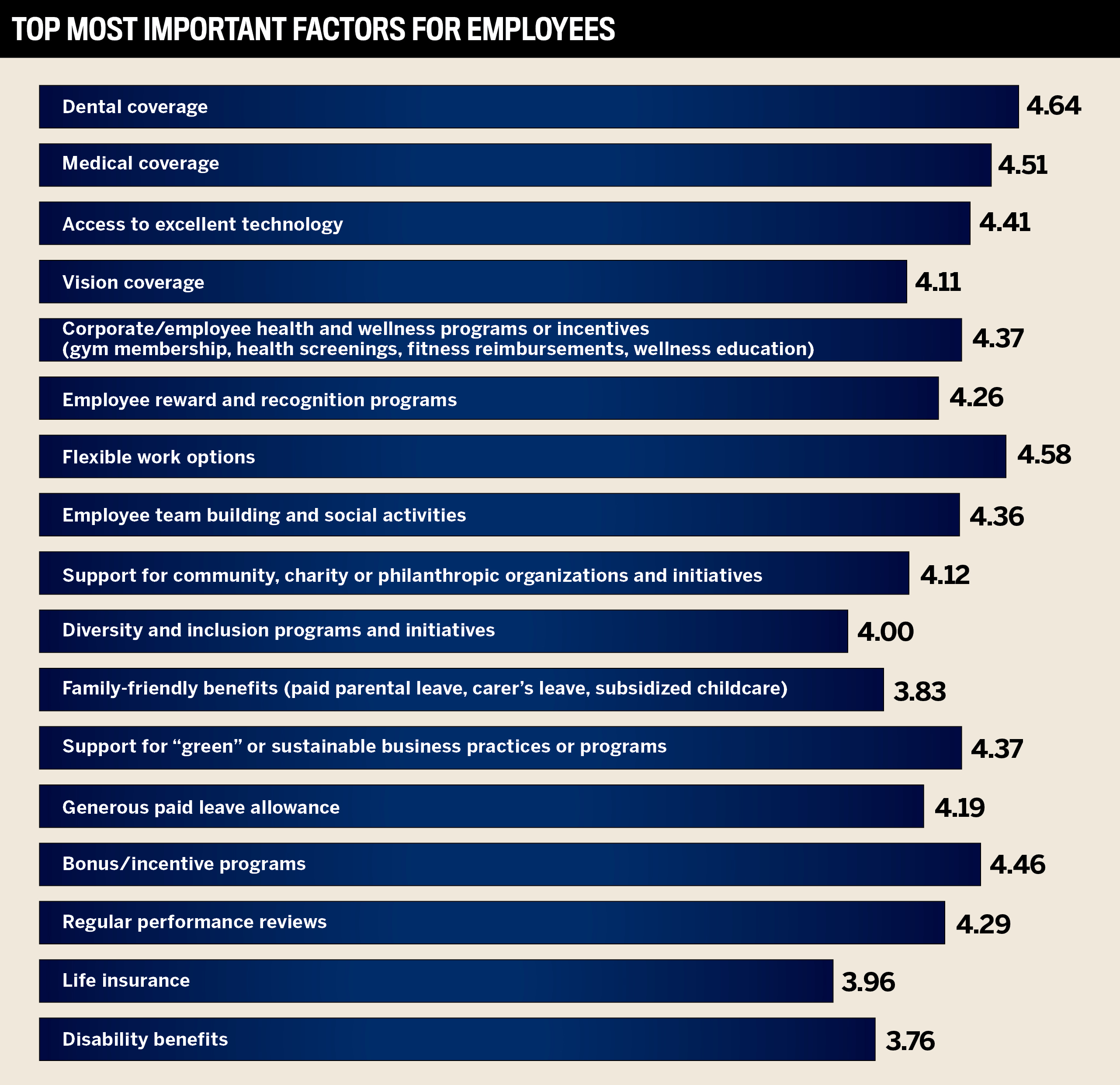

Jump to winners | Jump to methodology
Before the Great Resignation, a company’s culture was often defined by how many ping-pong tables were in the break room.
But now, with companies across the United States experiencing historic turnover, employers are doing whatever it takes to make their businesses as enticing and welcoming as possible. After all, more than 60 million Americans have quit their jobs over the past year, according to the US Bureau of Labor Statistics. As recently as April, searches for “toxic work environment quiz” increased 700%, according to search platform Conductor. Meanwhile, searches for “top workplaces 2022” increased 500%.
“We do regular compensation surveys to make sure we’re as competitive as we can be”
Marianne Stemm, Thrive Alliance
Prompted by the COVID-19 pandemic to re-evaluate their priorities in life, workers have been leaving their positions for greener pastures, demanding higher salaries, better working conditions, improved work-life balance, and more opportunities to advance their career. As a result, the scales have tipped in favor of labor, with companies having to increase their compensation and benefits packages beyond the traditional healthcare, dental, vision and 401(k) plans. Just over half (51%) of workers report their employers have added new or increased their existing benefits since August 2021, when the Great Resignation began gaining traction, according to a survey conducted by The Harris Poll.
To compete for top talent and keep those they already have, HR teams across every industry have been tasked with redefining what makes their company worth working for. Although extravagant perks are being dangled to get candidates in the door, what happens a month, a quarter or a year into their employment is even more important. If we’ve learned anything during the pandemic, it’s that companies need to earn the commitment of their employees by acknowledging their hard work, demonstrating appreciation and investing in their future.

Even before the Great Resignation, recruitment and retention were challenges for nonprofits because they rely upon sponsorships, grants, and other forms of funding.
“Compensation has always been an issue for us,” says Marianne Stemm, HR director at Columbus, IN-based Thrive Alliance, a nonprofit that provides housing, social, and caregiving services to southern Indiana. Thrive Alliance is almost 100% funded by the state.
“We do regular compensation surveys to make sure we’re as competitive as we can be. I’m also transparent with job candidates and say, ‘maybe we can’t pay, but look at what else we offer,’” Stemm says.
Thrive Alliance’s just over 100 employees receive a full array of health, dental, vision and free life insurance, along with short-term disability, a 1% salary match for 401(k) plans, a generous paid time off policy and a pretty flexible schedule.
Additionally, mental health benefits and resources have been in high demand since the pandemic began, as employees have suffered immense stress, anxiety and burnout. More than 80% of employees believe it’s their employer’s responsibility to help with mental health, according to recent data from Santa Monica, CA-based Headspace Health, a global provider of mental health and wellbeing solutions.
Yet, only 25% say that employers have maintained their focus on mental health in the last year. That’s quite the drop from the 71% who said their company increased focus on mental health following COVID-19. During the summer and fall of 2020, with employees working remotely, Stemm organized virtual counseling sessions and even group counseling to help alleviate stress and burnout.
Fostering such a supportive culture is a tall task considering that Stemm is an HR department of one. “I’ve been doing HR for 30 years, but the last two years have been the most stressful with COVID-19 and the transition to working from home,” she says. “But our employees continue to do important work, so I try to help them have a good work-life balance.”
“Like every other employer, we’re fighting over the same labor pool. We’ve been tasked within our respective areas to develop a strategy to better attract and retain”
Duane Winship, Choctaw Nation of Oklahoma
Benefits and perks remain a crucial element of company culture, and the Choctaw Nation of Oklahoma has increased its investment in such accommodations and amenities to illustrate employee appreciation.
“Like every other employer, we’re fighting over the same labor pool,” says Duane Winship, senior director of total rewards of the sovereign nation. In fact, the Choctaw Nation of Oklahoma is the third largest federally recognized tribe in the US.
“We’ve been tasked within our respective areas to develop a strategy to better attract and retain. We’ve had to adapt quicker over the past year, adopting initiatives, such as creating competitive cash compensation and flexible benefits, at a faster rate than we have in the last 20 years,” he says.
The entity, which has roughly 11,500 employees, runs three performance recognition programs: Employee of the Quarter, Simply the Best (awarded monthly and annually), and Above and Beyond the Call of Duty. Health care organizations use a third-party reward and recognition program, which allows managers to award points for various activities, such as volunteerism and excellent customer service. Meanwhile, employees in the nation’s casinos receive “free play” promotions throughout the year for birthdays, Christmas, winning awards, and other celebrations.
Incentives play a large role in how the nation motivates its workforce. For example, there’s a smorgasbord of bonuses available for everything from sign on to annual performance to continuing education to being vaccinated for COVID-19. There’s also a Service Award program, in which depending on their years of employment, recipients are awarded between $100 and $4,500.
“There has been a lot of discussion about what monetary bonuses will be of value that will help us keep the associates we have and attract new ones,” says Karla J Shugart, senior director of associate experience at Choctaw Nation of Oklahoma. “We’re hoping associates feel valued, especially during the pandemic. That’s why we’re trying to ramp up our recognition program – it’s one of those key areas that we know our associates appreciate.”
“It’s been a major challenge, but because we’re small and mighty, even in the midst of all this chaos, our team has remained innovative”
Loren Rosario Maldonado, Telvista

Of course, to build a thriving workplace, an organization has to ensure the health and safety of its employees. That’s been quite the challenge over the past two years, and HR leaders across the country have had to adapt to ever-changing laws and regulations regarding workplace safety.
On the federal level, private employers with 100 or more employees almost had to require vaccinations or weekly testing until the Supreme Court struck down the mandate. However, the high court ruled in favor of President Joe Biden’s vaccine mandate for health care workers at facilities receiving Medicare and Medicaid funding. Then, companies have had to abide by state and local guidelines regarding vaccinations, boosters, and masking.
“It requires constant daily review of all the laws across all the states,” says Loren Rosario Maldonado, chief people officer at Telvista, a Dallas-based provider of contact solutions. “It has compounded the work HR has to do just to remain compliant.”
Maldonado leads a global team across five companies, applying a systems-thinking approach to HR. The team built a performance management and organizational development practice, complete with key performance indicators (KPIs), a leadership competency model and career pathing. The team also implemented a cross-functional onboarding program, which yielded a 10% reduction in new hire attrition.
Improvements to administrative processes, such as benefit invoice reconciliation, terminations, onboarding and performance management, have led to a 60% combined productivity improvement across all shared services companies.
“It’s been a major challenge, but because we’re small and mighty, even in the midst of all this chaos, our team has remained innovative,” Maldonado says.
The entry process for the Best Places to Work ranking comprised two steps: an employer submission followed by an employee survey. Organizations had to complete an in-depth submission with questions looking at key factors such as employee engagement, turnover rates, average tenure of staff, compensation and benefits, health and wellness programs, diversity initiatives, professional development, corporate culture, flexible work options, reward and recognition, and green programs.
Companies that successfully completed the submission phase were then sent a link to an online employee survey to be circulated internally within their organization. To ensure the integrity of the data collected, employees were requested to provide their company email addresses.
Organizations had to meet a minimum number of responses to be eligible for the Best Places to Work recognition, based on company size: 1–99 employees = 10 minimum responses, 100–499 = 20+, and 500+ = 50+. The survey asked employees to rate their company across a range of metrics that constitute drivers of employee satisfaction. An employer needed to achieve an overall satisfaction rating of at least 75% to be recognized as a Best Place to Work.
One-third of winners are based in California
50% of winners are considered small businesses
4 winners have a turnover rate of under 25%